Guillermo Del Toro’s Pinocchio Reviewed: A Dark, Brilliant Take On An Old Tale
This article is more than 2 years old
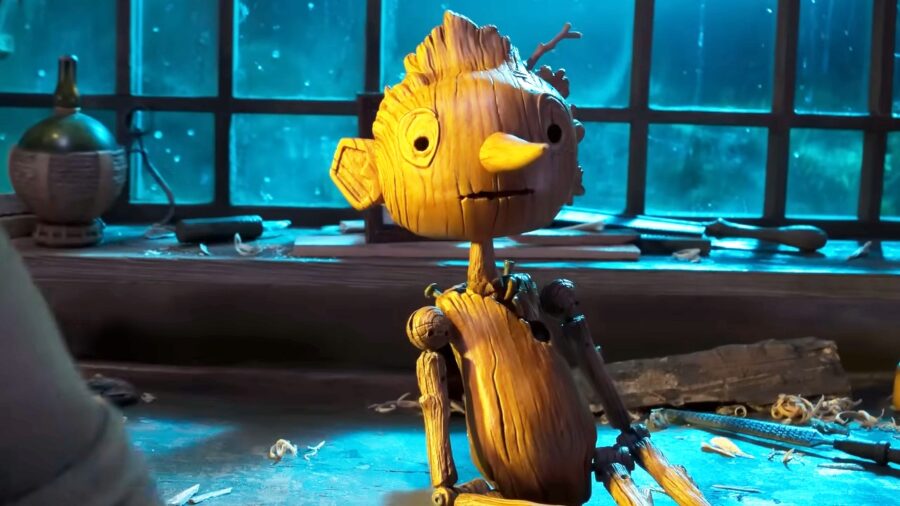
Perhaps one of the strangest things about 2022 in near hindsight is that a single year could produce no less than three different, distinct adaptations of The Adventures of Pinocchio, the 19th-century Italian children’s novel. The last of the bunch is Guillermo Del Toro’s Pinocchio and, predictably, is the darkest adaptation of what is already a pretty dark story if you think about it. Fortunately, this version of Pinocchio (released on Netflix and already receiving universal acclaim) sees the acclaimed Mexican filmmaker firing on all cylinders and producing his best movie since Pan’s Labyrinth.
Guillermo Del Toro’s Pinocchio Review Score

Guillermo Del Toro’s Pinocchio (which was co-directed by animator Mark Gustafson in his feature-length debut) hits many but not all of the story beats familiar to audiences who know the story best from Disney’s 1940 adaptation. There is a lonely old carpenter named Geppetto (Harry Potter’s David Bradley), there is a misbehaving magical wooden boy (Gregory Mann), there is even a talking cricket who acts as the voice of reason (Ewan McGregor). However, del Toro takes these elements and crafts a story around them that is unmistakably his own.
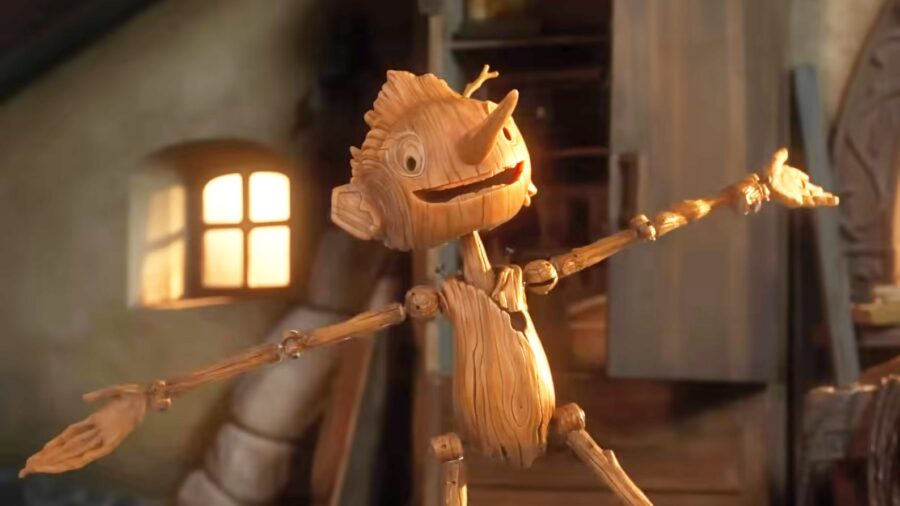
For starters, Guillermo Del Toro’s Pinocchio sets the action in 20th-century Italy, beginning with an extended sequence around World War I that ends in Geppetto’s human son Carlo (also voiced by Gregory Mann) being killed in a bombing raid and leaving the very realistic crucifix in their small town unfinished. Unlike many other versions of the story, Pinocchio is created by the combination of Geppetto’s drunken rage and a curious wood sprite and is recruited by Benito Mussolini’s National Fascist Party as the undying perfect soldier.
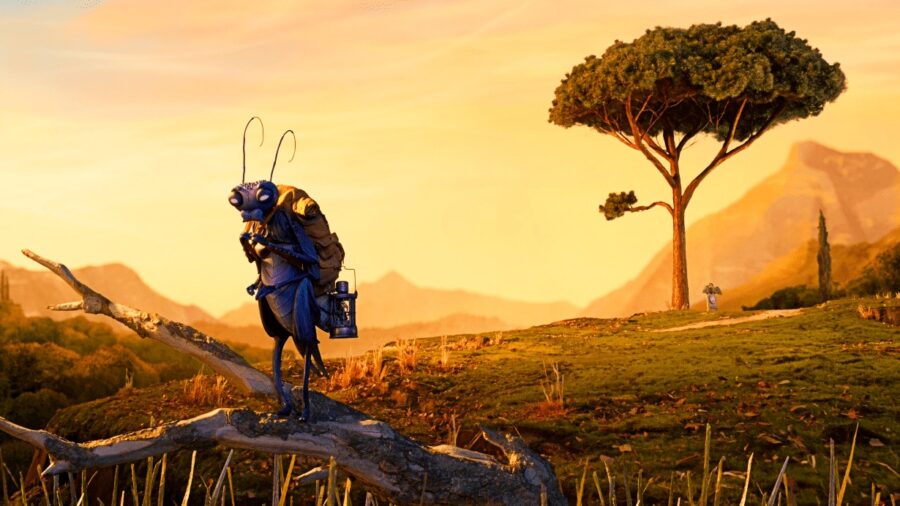
So, yeah, Guillermo Del Toro’s Pinocchio is not exactly for kids (which the filmmaker behind The Devil’s Backbone and the one in which a lady has sex with a fishman has been open about), though that does not mean that it is entirely grim. The stop-motion animation of the film is staggeringly detailed, rivaling modern classics like Coraline and The Nightmare Before Christmas in its combination of the grotesque and the beautiful. If there was ever a story that begged to be made with filmed puppets, it is undoubtedly this particular take on Pinocchio.
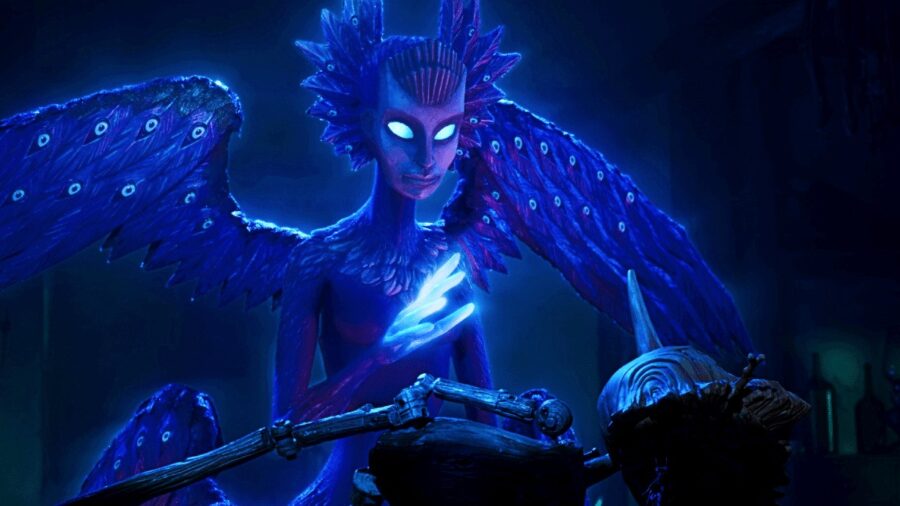
Reportedly, Guillermo del Toro has been developing a Pinocchio story for literal decades, viewing the tale as deeply personal to him as a person and artist. Clearly, this is one labor of love that he has spent much time molding in his own horror-tinged image.
Among the other changes that Guillermo Del Toro’s Pinocchio makes to the story is getting rid of the Fox and the Cat and the Coachmen with his terrifying Pleasure Island and donkey transformations. Instead, we get Count Volpe (Christoph Waltz), an impoverished, villainous circus master who sees Pinocchio as his ticket back to aristocracy, his monkey Spazzatura (Cate Blanchett, making a whole lot of animal noises), and a cameo appearance from Il Duce himself (voiced by Spongebob himself, Tom Kenny).
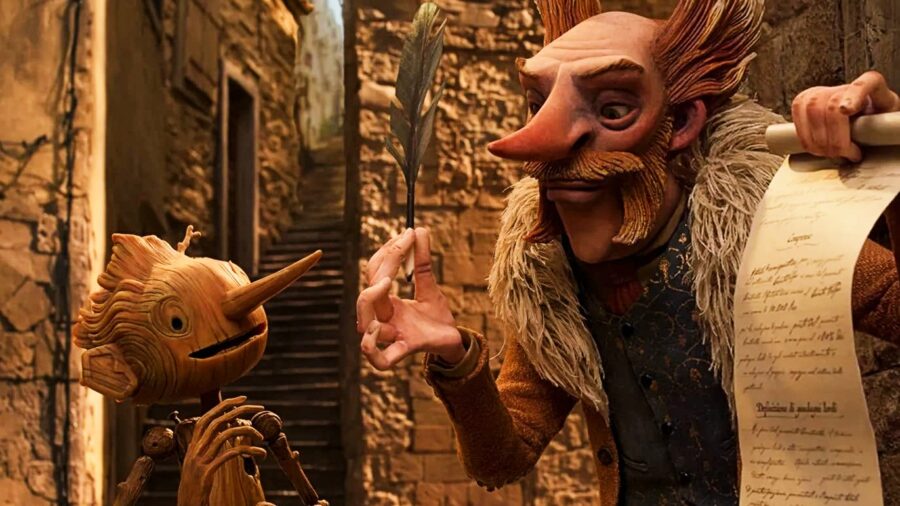
As with most of Guillermo del Toro’s work, Pinocchio is heavy on the Catholic imagery and criticism of the degrading, violent nature of fascism. The latter is represented by the Podestà (del Toro mainstay Ron Perlman), a brutal imperialist leader who sees Pinocchio’s inability to permanently die (we’ll get to that in a moment) as ideal for the perfect Italian soldier. That is, until he demands that his son Lampwick (Stranger Things’ Finn Wolfhard) straight up shoot Pinocchio as a demonstration of strength. Again, this is a dark story.
It is established early on that Pinocchio, as a magical creation given unnatural life by the Wood Sprite, cannot permanently die, but will be sent back to the realm of the living each time he is killed (and he is). This is explained to the wooden boy by Death herself (Tilda Swinton pulling double duty) in the form of an enigmatic, glowing sphinx, who is revealed to be the sister of the Wood Sprite and not particularly approving of her choice to grant life to the lifeless. Death also expresses the idea that the value of life is in its brevity, which is a pretty heady thing to say to a child, wooden or not.
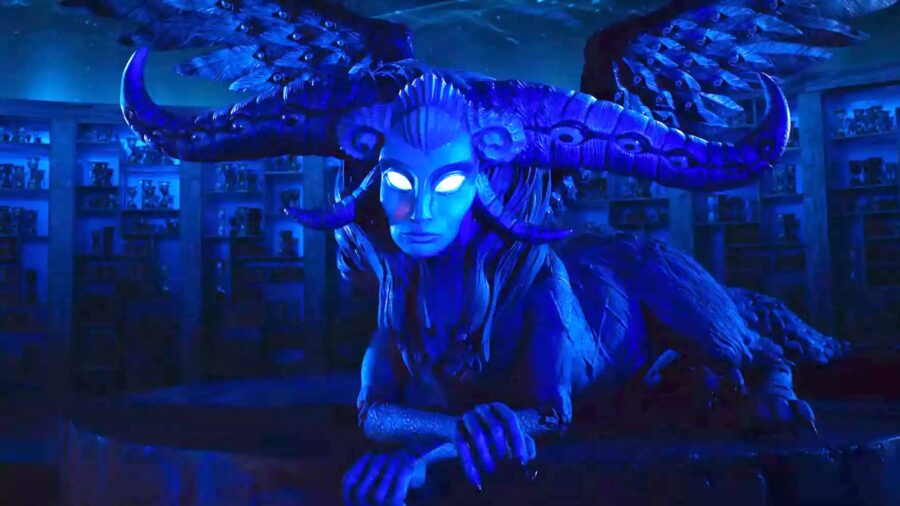
The realm of Death is the perfect encapsulation of what makes Guillermo Del Toro’s Pinocchio so distinctive and remarkable: the boy is carried in an ornate coffin by a group of cadaverous, anthropomorphic black rabbits (voiced by Tim Blake Nelson) who chant an eerie dirge up until they (literally) clock out for the day and start playing poker in the antechamber of death.
That’s the kind of image you are going to get from Guillermo Del Toro’s Pinocchio, which pulls off the trick of finding something fresh in a story that has been told so many times before. Guillermo del Toro is a very busy man these days, with a long track record of unrealized projects, but we should all be grateful that he stuck with this one.












